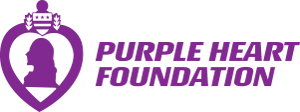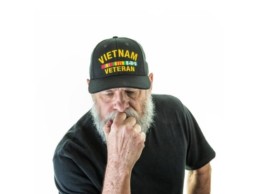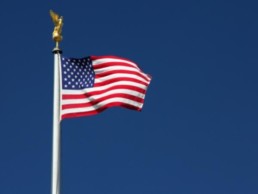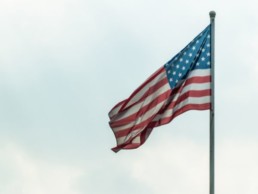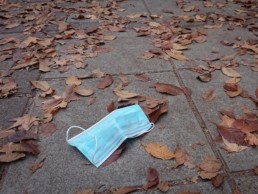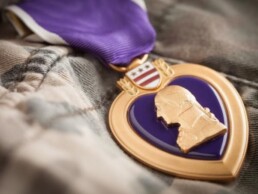Vietnam Veteran to High School History
We all wonder where life will take us, he never wondered, he knew. John Harrison, a sophomore student at North Carolina University, wanted to fly helicopters but the only way he was able to, was by joining the Army. Not many would jump at the idea of joining the military, but he did… just to fly helicopters. Growing up he had a great childhood, a loving family and no regrets. With a clear vision in mind and the love for helicopters in heart, he pressed on with the hopes of making a difference.
It didn’t take long for John to get through Basic Combat Training, pass all qualifications and tests at Ft. Polk, L.A. and confidently begin his service in the United States Army, something he had aspired to do for so long. The transition from civilian to soldier was not an easy one though; it was divided into three parts…
- “The RED phase” is the beginning of your training, to prepare you for what’s to come.
- “The WHITE phase” is where he got most of the physical and psychological strength.
- “The BLUE phase” taught him how to handle weapons.
During the first several months in the military, John really enjoyed his time with fellow soldiers and instructors who only had “Tough love” for him. Since he had prepared well for the Army he was in great shape to withstand just about anything, even though he recalls the weather being too hot. It was so unbearably hot in Vietnam that they would drink 4 to 5 gallons of water, every day.
Many would be surprised how John expresses his take on joining the army, but this experience changed his life, his points of view, and his whole being. In the military you can train and prepare as much as possible, but nothing is like experiencing the challenges and traumas of combat than real life. John went to Officer Candidate School later, where he became Airborne Rifle Platoon Leader and Company Executive Officer.
Not long after, his unit was deployed to Vietnam on a USNS (United States Naval Ship). John joked, that although his accommodations on that ship weren’t great, the food was the best part. Since the ship was old, they had to stop at an island in the Philippines for repairs. While on the island, many of them stayed late in a club and almost ended up getting killed! Then after leaving the island, they came across the end tag of a typhoon and many were having trouble keeping their food down.
Finally, they reached Vietnam. They were told they would be safe because they were being protected by South Korea. One of the scariest and most unexpected moments in Vietnam was the first time he got shot at while walking in the mountains with his platoon. John thought to himself that he had been around shooting ranges so it wouldn’t be such a big deal…but as they kept taking on fire, he felt dumbfounded, he didn’t react, he didn’t really know what to do in that moment. The firefights in Vietnam were nothing like they had trained for.
John lasted 4 years in the Army, and said that it was nothing like he had expected. The military can train you so much, but you will never be completely ready to fight when it comes down to it. He was awarded the Purple Heart medal, because he was wounded during his service in Vietnam. He is thankful every day for not ever being captured as a prisoner of war (POW) and for being able to come home to his family. John retired from the military and went back to school to study Law. He became a well-known attorney and realtor in the Washington-Metropolitan Area. Later he went on to teach law at Bishop Denis J. O’Connell High School where he said he truly enjoyed his time with his students and learned a lot from their different opinions.
Now John enjoys his time traveling, being at home and just enjoying life. He has published two (2) books, in which he narrates his life experiences in Vietnam. From one’s first impression of John though, you wouldn’t think he was a veteran or picture him in the dangerous settings he described to me today. One thing is for sure though, John Harrison is and always will be, “Army Strong”.
Giving Thanks for Freedom this Thanksgiving
Thanksgiving is a time to look back on the year gone by and reflect what you are thankful for. Thankfulness can come in many forms–having a new job, being able to provide for your family, or keeping friendships alive. For Americans, we have an extra reason to be thankful. Men and women in uniform working overseas and domestically make it possible for us to live in a free country.
For those who are overseas during the Thanksgiving holiday, the feeling can be bittersweet. Some are in war-torn areas fighting the enemy and most are away from the comforts of home and their families. There have been 152 recognized Thanksgiving holidays since its inception and despite being in unfamiliar territory, the armed forces have tried to make Thanksgiving as normal as possible for those deployed.
Even though the first nationally recognized Thanksgiving was not observed by the military because of a shortage of resources, over the years, there has been a push to have a Thanksgiving meal, regardless of where a service member is stationed. This food is usually gathered starting in May and sent out with the temperature-controlled food taking up to three months to reach its destination.
According to the Department of Defense, this is how much food was shipped out to various military bases across the world to prepare for a Thanksgiving feast last year:
-
51,699 pounds of turkey
-
25,970 pounds of beef
-
17,130 pounds of ham
-
706 gallons of eggnog
-
3,360 pounds of marshmallows
That is the equivalent to:
-
17 adult female hippos
-
14 1/2 Smart cars
-
24 male zebras
-
45 1/2 full kegs of beer
-
122 gold bars
The gathering of food doesn’t just stop at traditional holiday fare either. The Oak Lawn Park district in Illinois held its 6th annual Treats for Troops drive to send leftover and extra Halloween candy to those serving overseas.
While having a hot dinner can help stave off the feeling of homesickness during the holiday season, physically being with family and friends can make the holidays that much better. Spencer Girard, a seaman stationed in Norfolk, VA won a “Happy ThanksGathering” lottery to be the only person out of all the sailors and Marines stationed to be reunited with his family for the holiday. Katherine Girard said she hadn’t seen her son in a year and a half and being with him for the holidays last November was extra special, “The way they did it was just … oh my goodness. I didn’t know Norfolk was the world’s largest naval station, but you see when you get there. They spent a huge amount of money to treat everyone to a great Thanksgiving.”
On November 5, 2016, in the Albuquerque Convention Center while being welcomed back with the 126th Military Police Company from the Middle East, Specialist Rene Lopez held her daughter Amaya as her husband Specialist Jassen Lopez looked on. The couple were deployed to Kuwait together and left their four children, ages 3 to 8, in the care of family.
“Thanksgiving has come early to the people of the state of New Mexico,” Brigadier General Andy Salas, the state Guard’s adjutant general, told the crowd. The 120 soldiers who performed custom inspections-type work in maritime ports and airports across different parts of the Middle East wasn’t due back to the United States until January.
Kristen Smith, an Army wife, understands the changing nature of spending the holidays with someone in the military. Last year, she recalled how different the past 11 Thanksgivings have been with, and without, her husband. Thanksgiving celebrations varied greatly from sitting on the couch with her son watching movies to finally having her husband home last year for a “shockingly normal holiday.” For Smith, having such different variations of celebrating the Thanksgiving holiday has helped her be grateful in a way that she “could never have understood 12 years ago.”
During this holiday season, and every season, we are thankful for the work our troops do overseas so we can enjoy the freedom we have today. The Purple Heart Foundation is committed to assisting veterans in all aspects of their lives, including helping those who are in need of assistance while transitioning home from the battlefield. You can show your support for these brave men and women who have sacrificed so much for our country by making a one-time or monthly pledge to ensure veterans continue to get the support and benefits they deserve by clicking here.
The Real Story of Veteran’s Day
…The 11th hour…
…On the 11th day…
…Of the 11th month…
Hostility ceased in this moment back in 1918 marking the end of World War I.
Armistice Day was then celebrated on the 11th day of November to commemorate the beginning of this peaceful era. Nationwide there were celebrations, parades, public meetings and suspension of business for two minutes at 11am. Over the years, Congress has changed the date on which Armistice Day was celebrated, but in 1975 President Ford returned Armistice Day to November 11th, due to the significance and importance of that date.
Over 116,000 Americans defended the lives and freedom of our European allies during World War I. However, it was only after World War II and the Korean War that the commemoration of this day become known as “Veterans Day”, honoring the more than 1 million Americans who have died in all US wars.
Unlike Memorial Day which honors those members who made the ultimate sacrifice for this country; Veterans Day honors all veterans – those deceased and those living, regardless of whether they served in wartime or peace. Currently there are 1.3 million active duty service men and women, with an additional 800,000 serving in the reserves. There are approximately 21 million American veterans alive today. Many of them are like you and I…they are grandparents, parents, friends, neighbors, brothers, and coworkers. For some, there are physical signs of their sacrifice, but for others their wounds are on the inside. It is not easy coming home after everything a servicemember sees and endures. Due to the effects of Post Traumatic Stress, Traumatic Brain Injury, Military Sexual Trauma and more, an average of 22 veterans per day commit suicide.
This Veterans Day, we ask you to honor all of our veterans for their patriotism, service, sacrifice, and love of country. Make a donation to the Purple Heart Foundation!
Your contribution will help all veterans from all wars with all types of injuries. They will receive the benefits they have earned and deserve. Your contribution will fund grants, academic scholarships and so much more.
If you’re enjoying your freedom, thank a veteran by making a contribution today. The Purple Heart Foundation, honoring their sacrifice with our service.
COVID-19: Affecting America’s Veteran Population
At the Purple Heart Foundation, we have been monitoring the spread of COVID-19 just like all of you. As you may know, the World Health Organization (WHO) recognizes the spread of the coronavirus as a “Pandemic”; a situation nobody was prepared for. And now the coronavirus has officially hit home… all 50 states have verified cases of the coronavirus. However, this country was founded on the characteristics of bravery, courage and strength… so this too, we shall overcome.
Although everyone is at risk, the most vulnerable are those with underlying health conditions and those over 50 years old, including a community of over 13 Million military veterans across the country. We fear for the safety and health of our nation’s veterans during this pandemic.
So as our nation endures the trials and tribulations of this critical time, we urge you to remain a united front. Everyone is at risk, so be do your part.
As you prepare for social distancing and potential quarantine, we ask that you don’t forget about your family, your community, those less fortunate, and the veterans that fought for our freedom.
This is the time for you to step up. Reach out to the veterans in your family or community and be the hero in their lives.
The coronavirus is highly transmittable and must be taken seriously.
However, while the rest of the world is telling you to wash your hands and don’t touch your face (which is medically sound advice and we agree), we want you to remind you of the following as you prepare for self-quarantine during the spread of COVID-19:
- Adults +50yrs, with underlying health conditions are at high risk.
- Call and check on older adults and veterans.
- Don’t Panic. We can get through this together.
- Those at high risk may need assistance getting food, medicine and other supplies. Be there for others, or if you need help, ask for it.
- Offer to be a veteran’s emergency contact to give advice, help contact family, or call for emergency services, if needed. Offer to be a lifeline.
At the Purple Heart Foundation, we believe that right now the safety and well-being of veterans is of the utmost importance. To learn more about how to give veterans a fighting chance against COVID-19, visit:
www.purplehear2dev.wpengine.com/resources.
Honoring Purple Heart Month
As we begin the month of August, it is our great pleasure to welcome you to
Purple Heart Month!
This month is dedicated to paying our respects to all the brave men and women wounded or killed in combat. The official Purple Heart Day is observed on the 7th day of August each year, commemorating the historic day in 1782 that General George Washington, Commander-In-Chief of the Continental Army, commissioned the first Purple Heart Medal, originally called the Badge of Military Merit.
The Badge of Military Merit is a purple, heart-shaped piece of silk bound with a thin edge of silver with the word merit embroidered in silver across the face. Only 3 Badges of Military Merit were awarded. The Badge of Military Merit was redesigned and re-commissioned in 1932 by General Douglas McArthur in honor of George Washington’s bicentennial birthday. Now known as the Purple Heart Medal – it is the oldest military award, first being awarded to soldiers in World War I and still given to soldiers today.
A presidential order signed in 1942 permitted the Purple Heart Medal to be awarded to all branches of the military including the U.S. Coast Guard. It was World War II, when the qualification to receive the Purple Heart Medal changed to honor those who were wounded or killed in combat – that is why it’s recipients often call it “the medal that nobody wants”. It is unknown how many soldiers actually received it. However, we know that the soldiers listed below are some of the most awarded Purple Heart Recipients in history:
Robert T. Frederick, U.S. Army: World War II (8)
David H. Hackworth, U.S. Army: Korean War (3), Vietnam War (5)
Joe Hooper, U.S. Army, Medal of Honor: Vietnam War (8)
Robert L. Howard, U.S. Army, Medal of Honor: Vietnam War (8)
William Waugh, U.S. Army: Vietnam War (8)
It took the Purple Heart medal many years to evolve into what it is today. Today, on the reverse of the medal, “FOR MILITARY MERIT” is inscribed. The medal itself is made of brass with a gold color to it, and also contains a bust of George Washington and his coat of arms. The purple color represents the blood of all those who have made sacrifices in war, but traditionally it represent the courage of those who serve. The original color of the medal George Washington created was purple, so it was only fitting that it would be used to honor his memory in the new medal.
The Military Order of the Purple Heart (MOPH) was formed in 1932. It is composed exclusively of men and women who have received the Purple Heart Medal and is the only Veteran’s Service Organization whose membership is comprised solely of “combat-wounded veterans”.
The Military Order of the Purple Heart Service Foundation, also known as the Purple Heart Foundation, was later created in 1957 as a non-profit organization. For more than 60 years, the Purple Heart Foundation has solely dedicated itself to funding programs and services that support our nation’s heroes. Donate to show your support of the Purple Heart Foundation and to help us continue to serve our nation’s veterans who have already sacrificed so much.
DONATE
